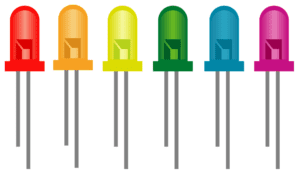
by Tom Barrett | Nov 9, 2022
Installing Holiday Lights Can Be a
Nice Bonus for Your Business
Irrigation and residential landscape contractors seeking an additional revenue stream during these colder months need look no further than holiday lighting installation.
Not only does holiday lighting provide a welcome profit, but it’s also a great way to keep your best workers employed during the off-season. It’s like a holiday bonus for your business.
Clientele typically include busy families with no time to spare during the holiday season, older couples whose light-hanging days are over, and (particularly) high-income households with large estate homes.
Here are a few ideas for getting started:
First Things First
Confirm that the size and average income of your local population can sustain an installation business. Are there fewer than 50,000 residents within 30 miles of your business? Then you probably don’t have the population base needed to support your new venture. What about the average income? Most of your customers will be upper middle class or higher. If the average household income within your service area is at least $150,000 a year, you’re probably in good shape.
![]()
 How Much Should
How Much Should
I Charge?
The amount you charge customers for a holiday lighting install depends on the complexity of the design, the square footage involved, the types of lights selected, and whether lights are purchased or leased. (The price of light strands averages between $80 and $300, depending on the product.)
The installation cost for the first year is typically reduced by 50% for subsequent years. Charges include free servicing and bulb replacement throughout the season.
Here are some average installation charges, according to HomeAdvisor:

Determine if there’s a reasonable demand for holiday lighting services. How much competition will you face? Do some research to make sure your local market isn’t already saturated. Bear in mind, however, that significant competition could mean the market is hot and can support multiple installers.
Find a Partner
Affiliating your business with an established holiday lighting company offers a fast track to success through training, sales leads, and product discounts. Some manufacturers will also supply various tools to help build your business, such as a designer app that illustrates how the lights will look on a client’s home, or an estimating program.
Another option to get your new business up to speed quickly is to purchase a franchise. For the cost of a start-up fee and a yearly royalty, you can get training and support, business software, territory protection, and marketing assistance.
Franchise companies provide the blueprints for efficient, replicable systems, so there’s no need to “reinvent the wheel” on each job. Installers can complete the job quickly and move on, optimizing the short holiday window of opportunity. As a result, franchises often work best if you stick to the established program and resist the temptation to deviate.
—Article Continues Below—

Potential Pitfalls
Experts in the field caution newbies about the following potential pitfalls:
Using inferior products. Don’t cut corners by purchasing cheaper products from the local big-box stores. Instead, choose waterproof, contractor-grade lights with sturdier bulbs, thicker wires, and more reliable connectors. These products provide a warranty.
Offering too many discounts. Remember, you’re offering a premium service that your customers will expect to pay for. Also, be sure to set a minimum charge. (See sidebar above, “How Much Should I Charge?”)
Assuming you’re covered. Make sure your insurance carrier includes coverage for climbing ladders and roofs and using hydraulic cranes.
Selling It
 Storing Lights
Storing Lights
Whether you choose to sell light strands to your customers or lease them, it’s a good idea to offer off-season storage for a nominal fee. Storing your customers’ holiday lights provides two substantial benefits:
- It helps expedite next year’s installation, especially if you use labeled bins and include blueprints or other schematics, along with the necessary attachments (timers, extension cords, etc.)
- It increases the likelihood of repeat business. Why should your customers go elsewhere when you already possess everything they need?
Even though the residential holiday lighting market is strong, you’ll still need to sell your irrigation and landscaping customers on the benefits of using your holiday lighting services. Here are a few selling points worth mentioning:
- The Wow Factor – professionally installed lights look beautiful and elegant without being garish (something your neighbors will appreciate). Be sure to show your customers plenty of examples.
- Safety – When trained professionals handle the job, homeowners have no risk of injury (falling from roofs and ladders, electrical shock, or exposure to the elements).
- Convenience – Your customers can spend their holiday preparation time on more enjoyable tasks with friends and family.
- Economy and Sustainability – professional-grade LED light strands are more durable and utilize much less power.
Sources:
Featured Image: Adobe, License Granted
Irrigation & Lighting
Christmas Designers
Angi

by Tom Barrett | Sep 7, 2022
How to Avoid Installation Missteps
Do you offer landscape lighting in your menu of services?
If so, we’re here to help you avoid five common mistakes when installing outdoor lighting systems. Let’s get started!
Mistake #1: Designing with Fixtures Instead of Light
There are a lot of impressive fixtures on the market, and homeowners can easily get carried away trying to incorporate them into their landscapes. But, make sure you’re designing with light and not fixtures.
Decide with the homeowners where they want to have light before you determine which fixture is best for creating the desired effect. Once your customers decide what they want to see and experience at night, you can help them make that vision a reality.
If you’re not designing with light, it’s too easy to use a particular fixture in ways it was never intended. For instance, path lights look great when they’re the right size and properly placed along a walkway. But they look out of place in a flowerbed far from any path.
Focus on the light, not the fixture.
Mistake #2: Using Poor-Quality Fixtures
Outdoor lighting fixtures are made with a number of different materials, most commonly aluminum, composite, copper, stainless steel, and brass.

Getting Into the
Lighting Business
Irrigation and landscape contractors are increasingly expanding their services to include outdoor lighting.
If your business is ready to “switch up,” you’ll want to take some training courses before performing jobs for homeowners. Although no special license or certification is needed, about six to 10 hours of class time should provide you with a basic knowledge of outdoor lighting.
Training is available through your irrigation distributor and lighting vendors such as Kichler, FX Luminaire, and Alliance.
Cast aluminum and composite are less expensive, but they’re lower-quality materials. Over time, it can oxidize, and the paint will fade considerably. (Powder coating can help extend the life of the fixture, but UV rays will cause it to discolor, chip, or peel.) Likewise, composite fixtures will begin to degrade after relatively short exposure to the outdoor elements.
Stainless steel is durable and perfect for a more modern look, but it must be kept clean to prevent corrosion. Dirt, sand, and other materials can compromise its protective layer of chromium oxide.
Brass and copper are both naturally resistant to corrosion. (They will slowly patinate when exposed to the elements, but they will not corrode.) Brass and copper are more expensive, but they’re also the most durable metals. Several manufacturers offer extended warranties on their brass and copper products.
Also be sure to use thicker-gauge wires with waterproof connections and outdoor-rated LED bulbs for a robust lighting system.
Mistake #3: Blinding the Viewer
If you’ve ever been momentarily blinded by lighting while walking along a pathway or around a pool, you know how annoying it can be. This common lighting mistake is easily avoidable. Never install fixtures in a way that exposes the light source to the eye. The resulting direct glare causes visual discomfort and can obscure the viewer’s vision
Always use glare shields on spotlights and flood lights, and position the fixture in a way that allows the shield to block the light source from viewers’ eyes.
—Article Continues Below—

Mistake #4: Over-Illuminating
There are two causes of over-illumination: high bulb wattages (e.g., using a 50-watt halogen when a 20-watt would be visually more appealing) and too many fixtures positioned close together. (See sidebar, “Ditch the Runway.”)

Ditch the Runway
To avoid over-illumination on pathways, the experts at Volt Lighting recommend positioning path lights in a zigzag pattern.
Alternating the fixtures from one side to the other, instead of lining them up on both sides, offsets the “airport runway” effect and creates a more aesthetically pleasing landscape.
Also, for curved paths, be sure to position the lights so they follow the curve.
An adequately illuminated residence increases security, but the outdoor lighting installer must always consider the customers’ neighbors and be aware of relevant light pollution codes.
You can’t go wrong by consistently adjusting to the lowest possible light level. The light of a full moon has a light level of only 0.01 lumens per square foot (or foot candle). Most path lights project a level about ten times that, while a typical spotlight projects more than 100 times the level of moonlight.
Use the minimum light level for the most aesthetic lighting that still offers safety and security.
Mistake #5: No Maintenance Plan
The outdoor environment can be brutal. Heat fluctuation, precipitation, dust, insect/animal activity, and plant growth all take their toll on an outdoor lighting system. As a result, all landscape lighting requires a certain amount of upkeep.
Advise your customers of all the benefits of annual maintenance, then follow up with them to schedule an appropriate time to provide this service. Here’s a checklist of standard maintenance tasks:
- Remove hard-water deposits from fixture lenses.
- Bury any exposed wire.
- Trim back obstructive plant growth and/or relocate fixtures.
- Use a multimeter to test terminal blocks inside transformers and adjust power loads, if necessary.
- Inspect and adjust timers inside the lighting control.
- Realign crooked fixtures.
- Replace burned-out bulbs.
Sources:
Featured Image: Adobe, License Granted
Den Garden
Volt Lighting
The Hardscape Exchange
McKay Lighting

by Tom Barrett | Apr 6, 2022
Pandemic Has Boosted Demand for
Outdoor Living Spaces
With more homeowners investing in their outdoor living spaces during the COVID-19 pandemic, the demand for landscape lighting has continued to grow.
As a result, more irrigation and landscape contractors are adding outdoor lighting to their menu of services.
No Place Like Home
For the past two years, homeowners have spent more time and money on home improvement than ever before. And statistics show that residential landscaping has been the top priority during this period. Outdoor areas for cooking and entertaining are being updated, expanded, and illuminated with extensive area lighting.
Did You Notice
These Changes?

Earlier this year, the Irrigation Association replaced its Irrigation & Green Industry publication with Irrigation & Lighting. The new periodical, published quarterly instead of monthly, provides news and information to landscape irrigation and lighting contractors.
 The Ohio Nursery & Landscape Association (ONLA) has changed its name to the Ohio Green Industry Association (OGIA). The change is intended to make the organization more inclusive and reflect its commitment to all green industry professionals across the state.
The Ohio Nursery & Landscape Association (ONLA) has changed its name to the Ohio Green Industry Association (OGIA). The change is intended to make the organization more inclusive and reflect its commitment to all green industry professionals across the state.
Landscape designers know that one of the most effective ways to decompress when the world has run amok is with soothing low-wattage outdoor lighting. Moonlighting (soft lights that mimic silvery moonlight due to their very high placement in trees or structures) and downlighting (aiming lamps downward to imitate natural light) are two relaxing options that never go out of style.
In addition, homeowners are increasingly opting for smart outdoor lighting, a market that is expected to make strong gains through 2024, according to market research firm Freedonia Group. Smart technology allows users to switch outdoor fixtures off and on — and even adjust brightness and color — through remote control or voice activation.
Amp Up Your Irrigation Business
Does your irrigation business include landscape lighting services? If not, here are a few reasons to consider branching out:
- Outdoor lighting is simple to learn and requires no additional licensing.
- Outdoor lighting is safe due to the low voltage.
- Installing lights is an uncomplicated way to generate more income from a single job, since lighting wire can easily be laid when digging a trench for irrigation pipe.
—Article Continues Below—

- Lighting installation does not require a large crew or additional staff.
- Including lighting services in your portfolio makes your business more attractive to homeowners who want one contractor to handle all aspects of a project.
How to Get Started
Although no special licensing or certification is needed to install landscape lighting, you should take at least some training before performing jobs for homeowners. It’s a good idea to invest six to 10 hours of class time in order to acquire a basic knowledge of outdoor lighting.

Benefits of LEDs
For low-voltage landscape lighting, LED bulbs are the preferred choice, providing the following benefits to both contractors and homeowners:
- LED light uses about a third of the electrical power of incandescent or halogen, and LED lamps can last 20 times longer. Both represent significant cost savings.
- Contractors and designers can creatively accent a landscape or outdoor living area by choosing from an array of LED color and temperature variants.
- Because LEDs lack both heat and UV light, they are much less attractive to insects.
- Time required for bulb replacements and other general electrical issues is greatly reduced.
This training is available through various suppliers (e.g., Wolf Creek Company), as well as lighting vendors (such as Kichler, FX Luminaire and Alliance).
After you’ve received the training, try it out on your own home or that of your friends. This provides you with an opportunity to experiment and hone your skills before you begin customer installations. For example, you can determine how much light is produced by an LEDs of various wattage.
When it’s time to find a lighting supplier, most contractors choose to stay local for the sake of convenience. But you may wish to get quotes from two or three different distributors. Look for one with the best combination of pricing, product knowledge and experience.
Once your service is up and running, continue to learn as much as you can about outdoor lighting designs and products. (You want to be more knowledgeable than your customer!) Education and experimentation are keys to success when it comes to mastering the profitable business of landscape lighting.
Sources:
Featured Image: Adobe, License Granted
Statista
Landscape Business
Architectural Digest
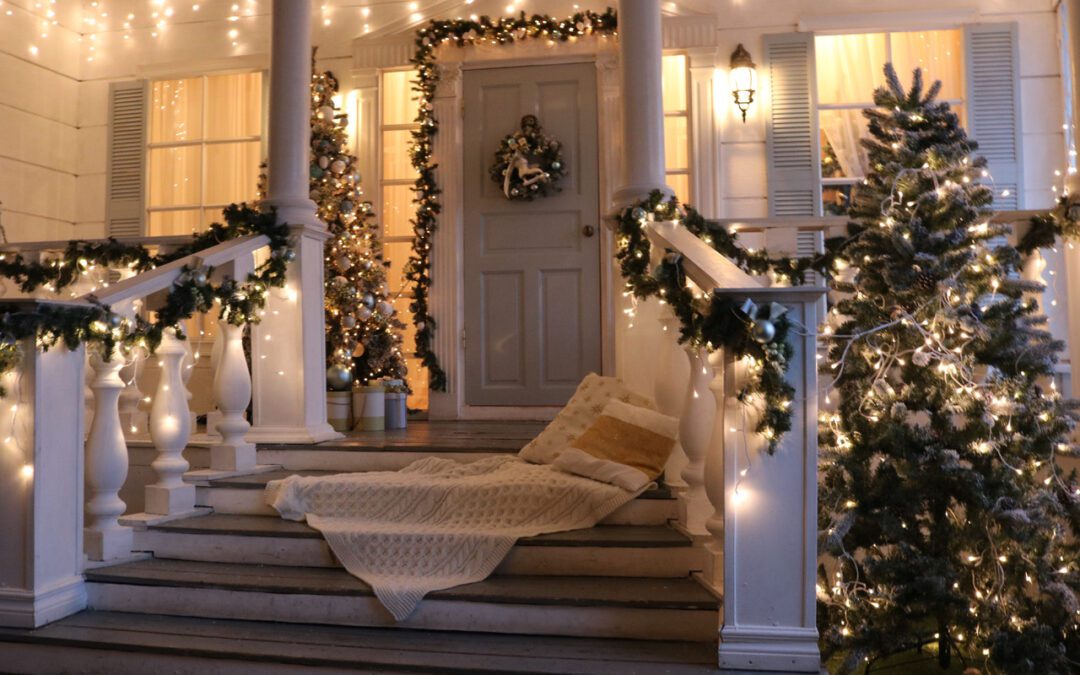
 How Much Should
How Much Should

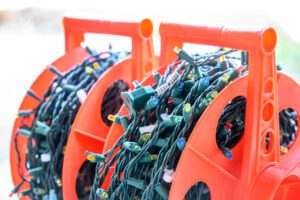 Storing Lights
Storing Lights
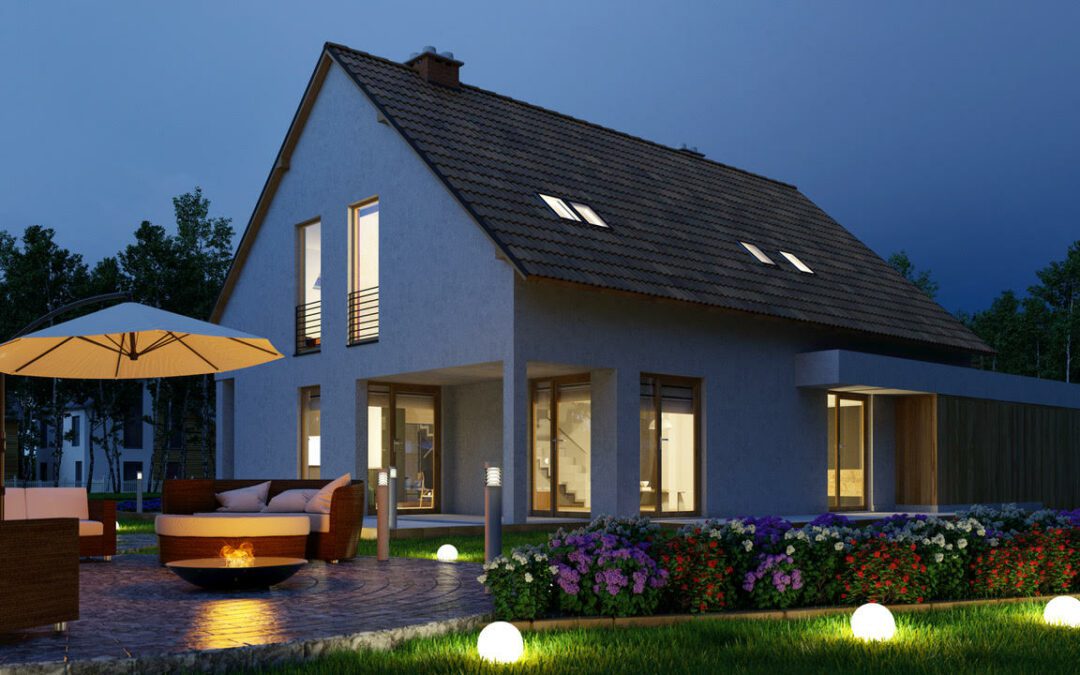
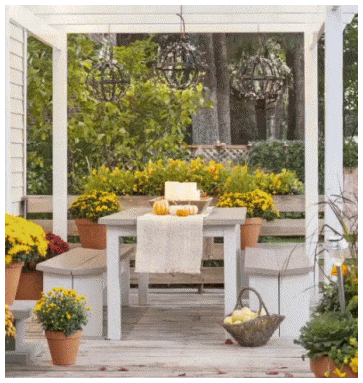
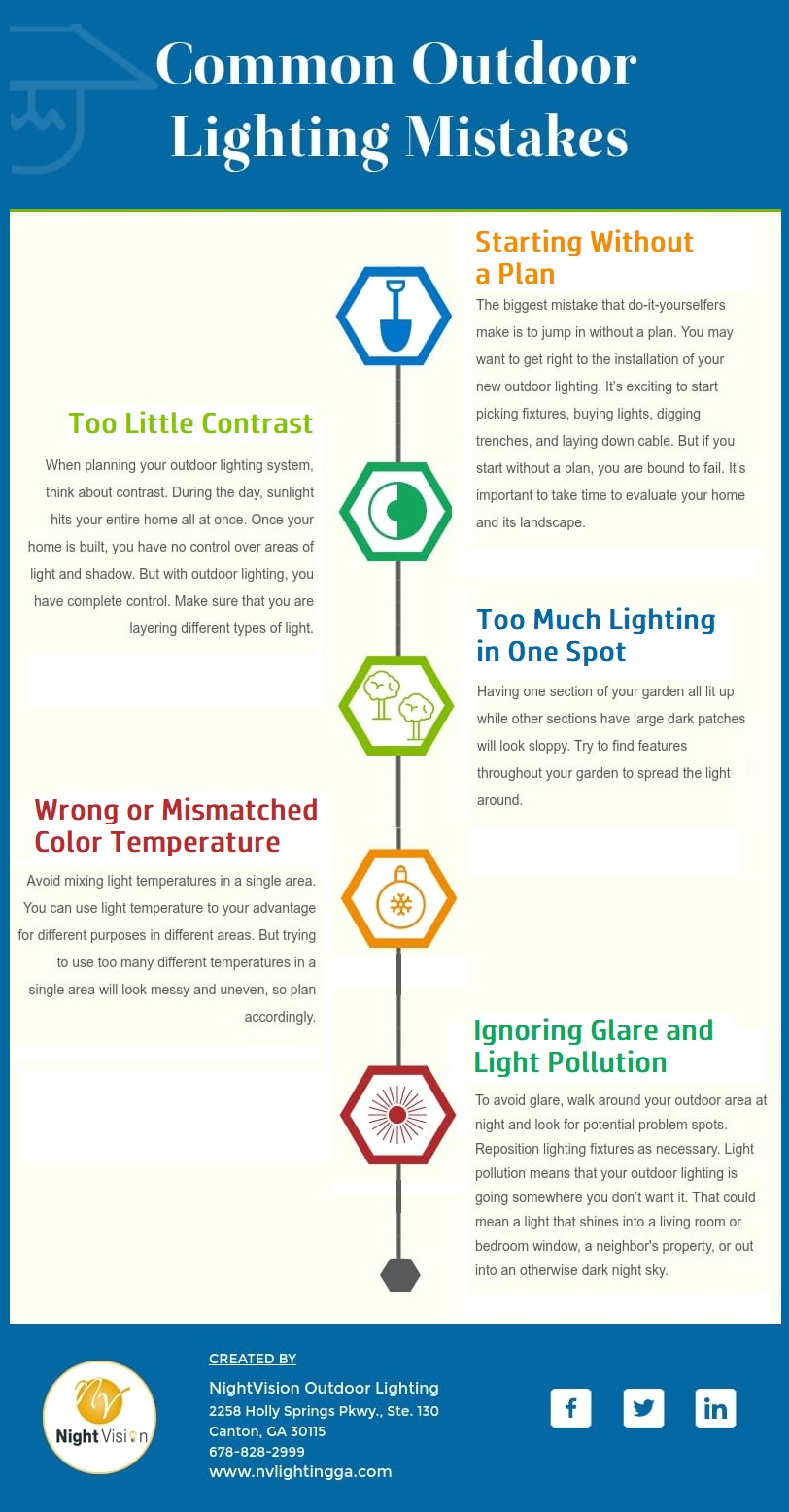

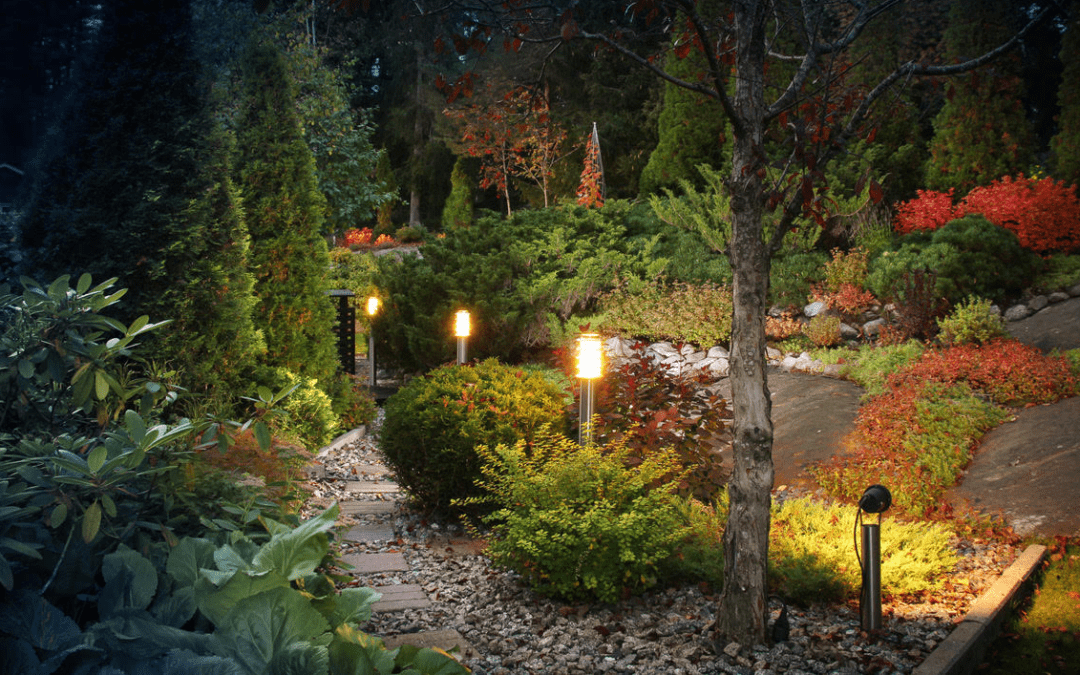
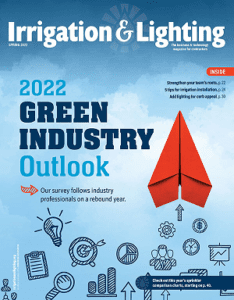
 The Ohio Nursery & Landscape Association (ONLA) has changed its name to the
The Ohio Nursery & Landscape Association (ONLA) has changed its name to the 
